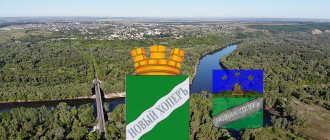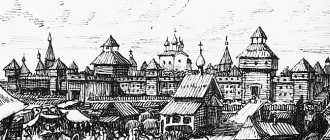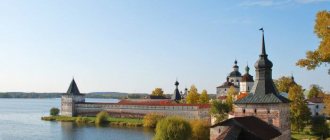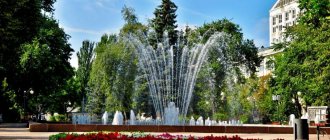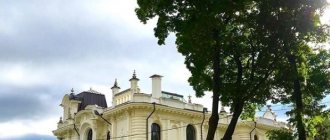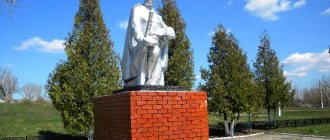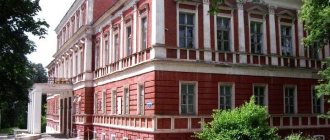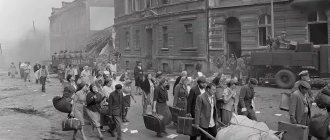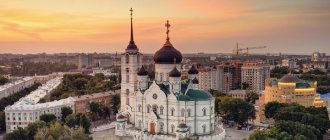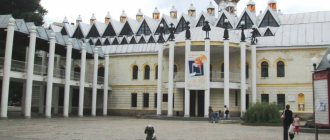Boguchar: areas, recreation, excursions, museums and churches, cuisine and restaurants, shopping and shops, attractions of Boguchar.
- Last minute tours
to Russia
Boguchar is the southernmost city of the Voronezh region, founded in the 18th century. Only about 12 thousand people live here, and at first glance, there is nothing special to do - a boring province. However, there are several interesting places in the city. It is in Boguchar in the house at the address st. Prokopenko, 15, the writer Mikhail Sholokhov wrote his first stories, as evidenced by the memorial plaque on the facade. It is also believed that it was this city that Andrei Platonov described in his novel “Chevengur” - evidence of this is the recently discovered ruins of the church, which, according to the description, completely coincide with the text of the novel.
History paragraph
Geographically, Boguchar from the time of its inception belonged to the historical region of Slobozhanshchina, or Sloboda Ukraine. Its settlements, or settlements, had more liberties than the villages and cities of the central part of the Russian Empire. The settlement of Slobozhanshchina began in the 15th-16th centuries, when Russian settlements began to appear on this territory, as well as settlements of Cossacks and peasants who fled from the voivodeships of the Polish-Lithuanian Commonwealth. Later, such settlers became the main inhabitants of border fortresses, for example, Ostrogozhsk, founded in 1652, where the largest Cossack regiment in this area was formed.
In 1704, by decree of Peter the Great, part of the Cossacks from Ostrogozhsk was transferred south - to the left bank of the Bogucharka River, 6 km from its confluence with the Don. It was the members of the Boguchar Cossack Hundred who became the first builders and settlers of the new outlying fortress - Boguchar. The settlement received city status in 1779.
Church of St. Nicholas the Wonderworker
You can see the ruins of the temple in the village of Abrosimovo, Bogucharsky district. The outlandish historical monument is a dilapidated building with a dome and a part of the bell tower that miraculously survived during the Great Patriotic War. Its interior is either destroyed or littered. Reliable historical information about the church has not survived.
Information about the time of construction is obtained from church documents of neighboring parishes - it dates back to the second half of the eighteenth century.
3 things to do in Boguchar
- Try Bogucharsky sunflower seeds - a branded product and probably the most famous product from the Bogucharsky district.
- Find the house where Nobel laureate, writer M.A. lived. Sholokhov. It is located at 15 Prokopenko Street. Sholokhov wrote his first stories there. In memory of the famous resident, a memorial plaque hangs on the facade of the house.
- Visit the church-museum. In 1862, the first stone building appeared in Boguchar - the Church of the Nativity of the Blessed Virgin Mary. As fate would have it, during the Soviet years the building ceased to fulfill its original functions, and for more than 30 years it has housed a local history museum.
Boguchar
How to get there
The distance from Voronezh to Boguchar is 250 km along the M-4 Don highway. Travel time by car will be 3-3.5 hours, excluding possible traffic jams on the section from the village of Losevo to Pavlovsk.
Nine direct buses and buses passing through Boguchar depart daily from the central bus station on the Voronezh – Boguchar route. The cost of a one-way ticket is 530 rubles. Travel time is 4-5 hours.
You can find a driver companion using the BlaBlaCar service or a group on VKontakte. BlaBlaCar users daily offer 10-12 options for trips from Voronezh to Boguchar. To find a travel companion, you need to register on the website, provide a phone number and email, briefly describe your interests, talk about your attitude towards smoking, music in the cabin, pets and other details that may be important on the road. Drivers can be selected based on the ratings and reviews that other users left for them. Prices for fellow travelers vary from 300 to 500 rubles per person.
Sights of Boguchar
During the Great Patriotic War, Boguchar was under occupation for six months (from July to December 1942). During the bombing and battles for the city, many of its buildings were destroyed. Some of the ancient buildings of Boguchar were restored to their original form after the war, some were rebuilt, and now the city has about 40 historical and architectural monuments of value.
The history of the city and its rather respectable age are reminiscent of the memorial stone “Here in 1704 the city of Boguchar was founded.” At this place at the beginning of the 18th century there was a fortress, and specifically at the place where the stone was installed, according to research, in 1730 the first Boguchar wooden church of Elijah the Prophet was built and consecrated.
Another historical place in Boguchar was discovered quite recently: local workers carrying out work to improve the city cemetery discovered the remains of an ancient church.
Local historians and writers said that this church is further evidence that the writer Andrei Platonov in his novel “Chevengur” described exactly the events that took place in Boguchar.
There are also attractive tourist sites in the vicinity of Boguchar. True, they are not on the official list, so you can only see them yourself. For example, not far from the village of Galievka there is an abandoned cave monastery of the 19th century with an underground church, cells, utility rooms and a total length of passages of about 150 meters. Further advancement is impossible due to rubble: the monastery was bombed during the war, and in 1959 it was significantly damaged by Soviet explosives. This is another example of a Pridon monastery on the territory of the Voronezh region, but, due to its neglect, is not as famous as the Divnogorsk Holy Dormition, Kostomarovsky Holy Spassky or Belogorsky monasteries.
20 km from Boguchar, in the village of Dubrava, in a local school there is an unusual and quite large by regional standards museum, founded by the head of the local search party. In addition to many interesting exhibits telling about history, as well as military artifacts, the enthusiast’s collection includes more than a hundred antique typewriters, gramophones and televisions.
White slide
Local veterinarians say: Belogorsk mineral water has an excellent effect not only on people. It helps to raise good numbers of sheep and cattle.
About 50 km from Boguchar there is a “wild” resort, favored by local residents and special guests who come here. The place, called White Hill, became popular after in 1939, while drilling a coal well, an artesian source of mineral water was accidentally discovered here, which comes from a depth of 156 meters. It contains many chemical elements, which is why it is compared to the famous waters of Karlovy Vary and Wiesbaden. This water helps in the treatment of gastrointestinal diseases and joints. For many years, residents of the Voronezh region and guests of the region came to the “savages” for healing water, staying in tents on the banks of the Don. Now everyone has the opportunity to relax in a civilized manner - a rest house with the functions of a sanatorium was built near the source.
What is Boguchar famous for? History of Boguchar
History of Boguchar, year of foundation of the city, attractions, hotels, entertainment, reviews of city guests.
In 1704, the settlement of Boguchar appeared on the banks of the Bogucharka (in those years called Bauchar or Bouchar) and Tolucheevka rivers. Before this, the river valley was almost not populated, although the settlement of the Bogucharsky yurt existed here before, but the first mention of the Cossack town dates back to 1704. In 1716, its inhabitants became Cherkassy from Ostrogozhsk, who moved by order of Peter I, and a year later to Cossacks joined him from there. Mostly at that time, residents were engaged in farming, and also bought livestock in the Don Army Region and transported it to large settlements.
The administrative affiliation of Boguchar changed rapidly during that period:
- In 1765, the settlement was annexed to the Sloboda-Ukrainian province and became part of the Ostrogozh province;
- In 1779, the settlement received the status of a district town as part of the newly founded Bogucharsky district - part of the Voronezh governorship;
- In 1796 he transferred back to the administration of the Sloboda-Ukrainian province;
- Since 1802 it has been part of the Voronezh province. In 1856, the city had almost 300 houses, 3 churches and 18 shops.
In the Bogucharsky district, there were frequent uprisings and escapes of peasants to the Anapa fortress and to Kazan - not having land, they ran away to look for a better life, and for this, at their destination they had to enroll in the government. It would seem that with the abolition of serfdom the situation should have improved, but even then the conditions, and with them the mood of the peasants, did not undergo significant changes: the residents of Boguchar actively took part in the revolution. In March 1917, the peasants publicly called for the land to be transferred to them, while the bourgeoisie advocated for the start of the war. As a result, by the end of the month the Bogucharsky Council was assembled, which acted as the body of temporary power of the Bolsheviks.
Soon, coups broke out in the city: residents attacked supporters of the tsar’s power and confiscated their weapons, released criminals from prisons and imprisoned the bourgeoisie there. The new government did not suit everyone; some advocated a return to the old order.
When the events of October 1917 became known in Boguchar, the city duma teamed up with the zemstvo council, which still had some weight, to help General Kornilov, but due to the propaganda carried out by the council, it did not work out to form a detachment from the residents. In November, the council came out with a demand to eliminate dual power in the city. Residents had doubts for a long time, but the result was the strengthening of Soviet power in the city at the end of 1918.
In the mid-20s, the development of the socialist system reached its peak. The first communist organizations appeared in Boguchar and the surrounding area, and in the village of Grushevoy a Komsomol organization was founded that supported the government’s policy of collectivization of agriculture. Artels for collective cultivation of the land appeared - and in these artels, women worked equally with men, and sometimes even better than them. In the 30s, the Bogucharskaya MTS was opened, which owned 25 tractors and 6 cars, and was in charge of more than 25,000 hectares of land. At the end of the same decade, industrial development began actively in Boguchar: a power plant, an iron foundry and an oil production plant, a printing house and a repair shop were opened.
On July 10, 1942, the city was occupied by the Nazis during Operation Blau, and liberated from occupation on December 19 of the same year during the Middle Don Operation.
In the 90s New factories, a House of Folk Art, hotels and shops are opening in Boguchar.
Since 2002, Boguchar has been included in the list of historical cities of Russia.
Monument to Mikhail Sholokhov
The opening of the monument was timed to coincide with the centenary of Sholokhov’s birth and took place in the central park of Boguchar.
Not many people know that the famous Russian writer, author of “Quiet Don” was born and studied in this small town in the Voronezh region.
The monument is a column with a bust installed on it against the backdrop of a glass wall - a kind of wall of honor, on which the names of the works of the great author are indicated.
Not far from the central park there is another memorable place - the gymnasium where Mikhail Sholokhov studied. And especially curious guests of Boguchar will certainly be able to find the house where the writer lived during his youth and early creativity.
Location: Sholokhov street.
Fire Department
The fire station is located in the very center of the city. The building has two floors and is built of brick. The station was opened at the end of the 19th century, so its decor is typical of the eclecticism of provincial cities of that period. Inside the building is divided into three zones:
- Fire station - the entire first floor.
- Duty rooms are on the side of the second floor.
- A square room with thick walls is the central part of the second floor.
The premises are still in use today.
Location: Malakhovsky street - 10.
Notice of the planned seizure of land plots for state needs!
In accordance with Article 56.5 of the Land Code of the Russian Federation, the Federal Road Agency reports the planned seizure of land plots for state needs located on the territory of the urban settlement of the city of Boguchar, Boguchar municipal district, Voronezh region.
ATTENTION! DECREE OF THE GOVERNOR OF THE VORONEZH REGION dated September 21, 2022 No. 391-u Voronezh On amendments to the decree of the governor of the Voronezh region dated 05.13.2020 No. 184-u In accordance with Federal Law dated December 21, 1994 No. 68-FZ " On the protection of the population and territories from natural and man-made emergencies”, Decree of the President of the Russian Federation dated May 11, 2020 No. 316 “On determining the procedure for extending measures to ensure the sanitary and epidemiological well-being of the population in the constituent entities of the Russian Federation in connection with the spread of a new coronavirus infection ( COVID-19)", by decree of the governor of the Voronezh region dated March 20, 2020 No. 113-u "On the introduction in the Voronezh region of a high-alert regime for governing bodies and forces of the Voronezh territorial subsystem of the unified state system for the prevention and liquidation of emergency situations" I DECIDE: 1. Introduce into Decree of the Governor of the Voronezh Region dated May 13, 2020 No. 184-u “On the extension of measures to ensure the sanitary and epidemiological well-being of the population in the Voronezh Region in connection with the spread of the new coronavirus infection (COVID-19)” (as amended by the Decrees of the Governor of the Voronezh Region dated May 20. 2020 No. 195-u, dated 05/22/2020 No. 202-u, dated 05/29/2020 No. 212-u, dated 06/11/2020 No. 243-u, dated 06/19/2020 No. 251-u, dated 06/26/2020 No. 265-u , dated 06/30/2020 No. 269-u, dated 07/03/2020 No. 273-u, dated 07/07/2020 No. 277-u, dated 07/10/2020 No. 280-u, dated 07/16/2020 No. 289-u, dated 07/23/2020 No. 300-u, dated 07/31/2020 No. 312-u, dated 08/14/2020 No. 335-u, dated 08/20/2020 No. 345-u, dated 08/27/2020 No. 355-u) changes, stating it in the following wording: “ On the extension of measures to ensure the sanitary and epidemiological well-being of the population in the Voronezh region in connection with the spread of the new coronavirus infection (COVID-19)
The election commission of the urban settlement - the city of Boguchar informs:
- on holding meetings of candidates for deputies of the urban settlement - the city of Boguchar with the population of the city of Boguchar on September 03, 2022 at 15:00. Venue: Boguchar, sq. Malakhovskogo, 4, district House of Culture “Yubileiny”.
- on holding meetings of candidates for deputies of the urban settlement - the city of Boguchar with the population of the city of Boguchar on September 09, 2022 at 15:00. Venue: Boguchar, Military Town, 60, district cultural and leisure center for children and youth.
The Election Commission of the urban settlement - the city of Boguchar informs about registered candidates for deputies of the Council of People's Deputies of the urban settlement - the city of Boguchar, Bogucharsky municipal district of the Voronezh region of the seventh convocation by electoral districts:
White slide
White Hill is a place in the nearby vicinity of Boguchar with a source of mineral artesian water. The healing properties of the local water are compared with the famous mineral waters of the Three Lilies and Karlovy Vary waters.
The well is located in the Belgorod gully and its depth is 156 meters . Previously, only “savages” could relax near the White Hill, however, now you can enjoy the healing properties of artesian water by visiting a sanatorium - a wonderful place for a civilized recreational holiday.
Church of John the Warrior
A functioning Orthodox church, erected near a cemetery on the outskirts of Boguchar in 1903. The temple, closed after the revolution, was reopened in the 40s and has not stopped its activities until today. The Church of St. John the Warrior is considered central in the Bogucharsky district: services are regularly held there. In addition, the church runs a Sunday school.
Location: 25 October street.
